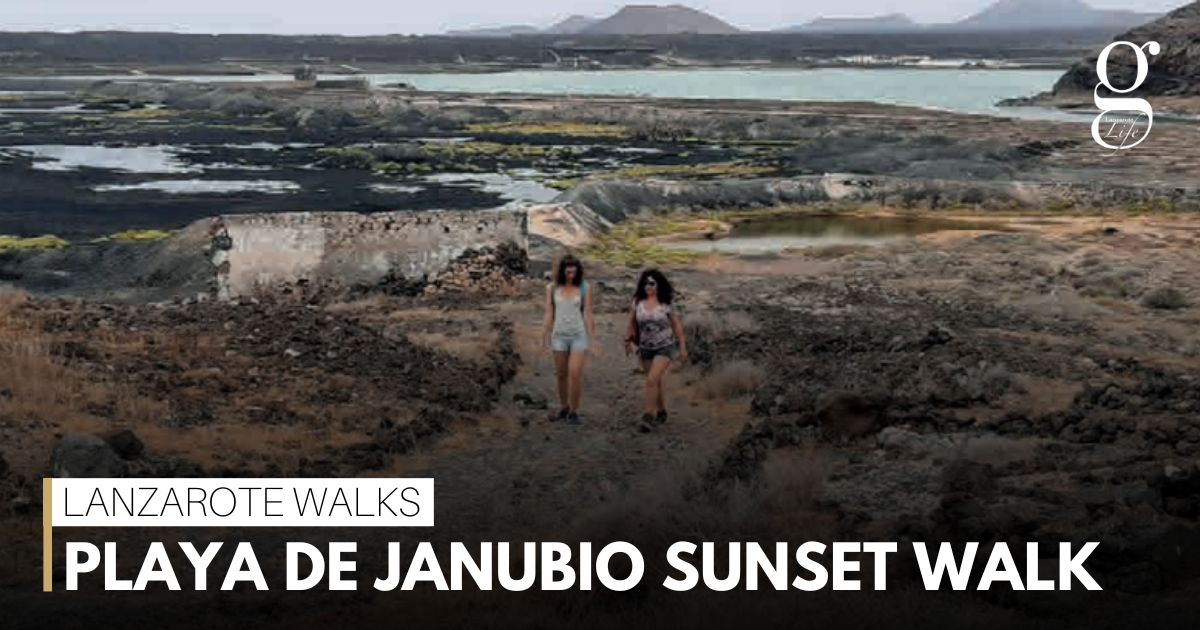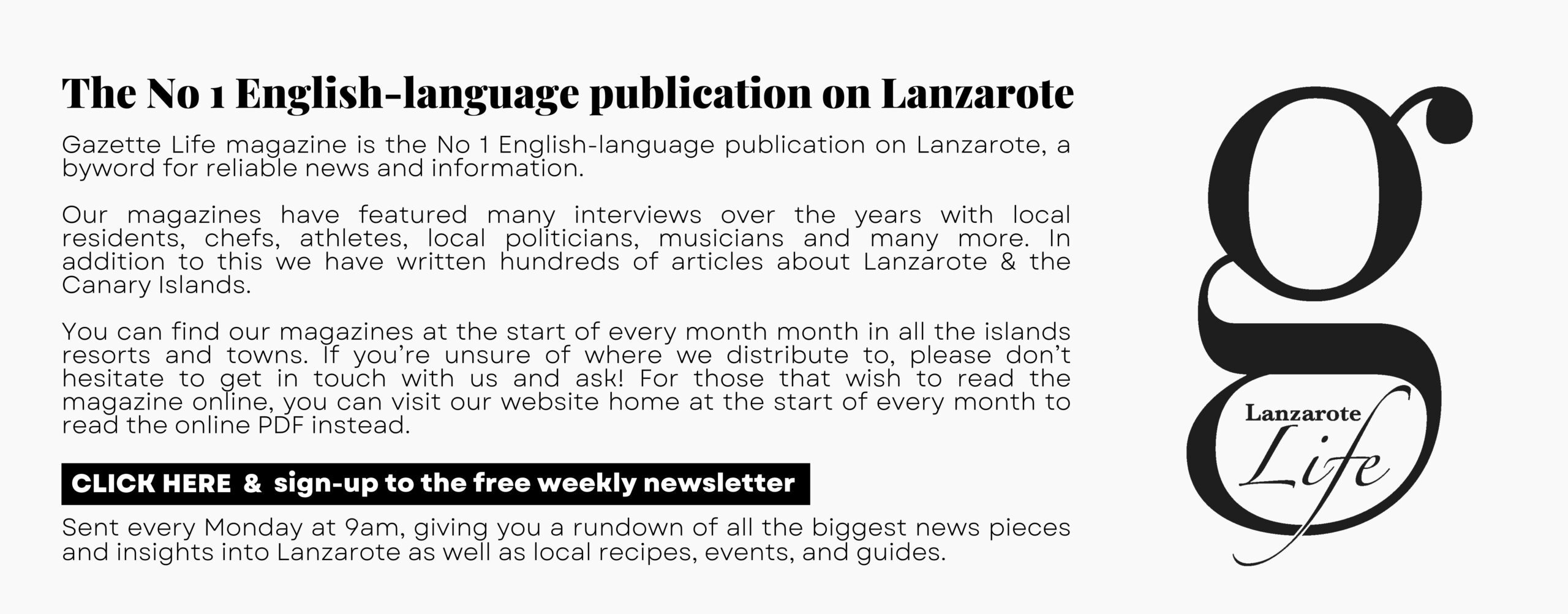David Penney guides us along the Playa de Janubio – a stark black strand where sea, sky, surf and black sand meet, and which often offers magnificent sunset views.
At the end of a very hot calima day where temperatures hit mid 30s during the daytime, we all agreed to enjoy the cooler evening breezes at Janubio.
We parked in the big parking area on the northwest side of Las Salinas (the salt pans) and set off towards the disused molina (a light windmill, not to be confused with the larger molinos), keeping the ocean on our right and Las Salinas on our left.
When we arrived at la molina we pause for a few photos, and I tell the girls about the history and the purpose of them being introduced to pump water in and out of the salt pans. I also shared the tall story which I often tell the tourists to have a bit of fun, that the area of Las Salinas is famous because here they “grow the salt” to put it in the ocean and make the water salty!
We continue walking towards the cliff face in front of us and I ask everyone to stop talking and walk quietly so we can see the various species of wading birds who have made their home here.
The best time to see these birds is early morning, as they are more noticeable. I tell them to keep a special eye out for the black winged stilts, which reside here all year round and can easily be identified by their black-and-white body and very distinctive long red legs. As we approach, a group of about a dozen stilts are disturbed and take off, skimming the water with their legs tucked up flush to their bodies.
Some of the water around this area can have a film of chemical build up as it is almost stagnant and not fully refreshed by the tides. Here you will see some colourful fauna and vegetation which survives on the water’s edge and attracts the insects, which some of the birds feed on.
As we are now facing the rocky cliff in front of us, I suggest that we continue along the water’s edge and head over to the cliff face and explore that area. This is the site of a mini barranco (ravine) which has been formed by the rainwater running down the rocks and creating an almost smooth surface exposing various colours. Red is from iron oxidation (rust) and yellowy orange is sulphur phosphate.
Next, we make our way over to the abandoned buildings and realise that it has been “adopted” by a German guy who has some of his personal items inside. Although he was not “at home”, we respectfully moved on to the aljibe (sealed water tank). As we approached, a feral cat was disturbed and went scurrying up a water pipe to avoid us.
We now follow the track up to the other carparking area, which is on the south west side of Las Salinas and is accessed from a rough track from the LZ-701 which runs parallel with the LB2 down to Playa Blanca.
At this point we start our return along the black sand beach of Playa del Janubio. The tide was out, so the wet sand was peppered with tiny particles of olivina, the green semi-precious crystal.
We paused for a few photos on the beach, but on this occasion the sky was hazy because of the calima that the island experienced, so we didn’t get to enjoy a spectacular sunset. We were greeted by a friendly dog who came running along the beach to check us out in the hope we may have a snack bar left to share with him.
The car park ahead of us was filling up with hire cars and locals who choose this as a good place to watch the evening sun disappear over the ocean.
A few of us drove back to Yaiza to have a cool drink and it was a nice finish to a pleasant evening stroll with friends.
WALK INFORMATION
This is a circular 5km walk that should take you approximately an hour to complete. The terrain is easy and flat.
Unfortunately, you will need a car for this walk, as no public transport will bring you to the area.
For regular updates, pictures and videos of Lanzarote be sure to like and follow our Facebook page “Gazette Life Lanzarote”.











